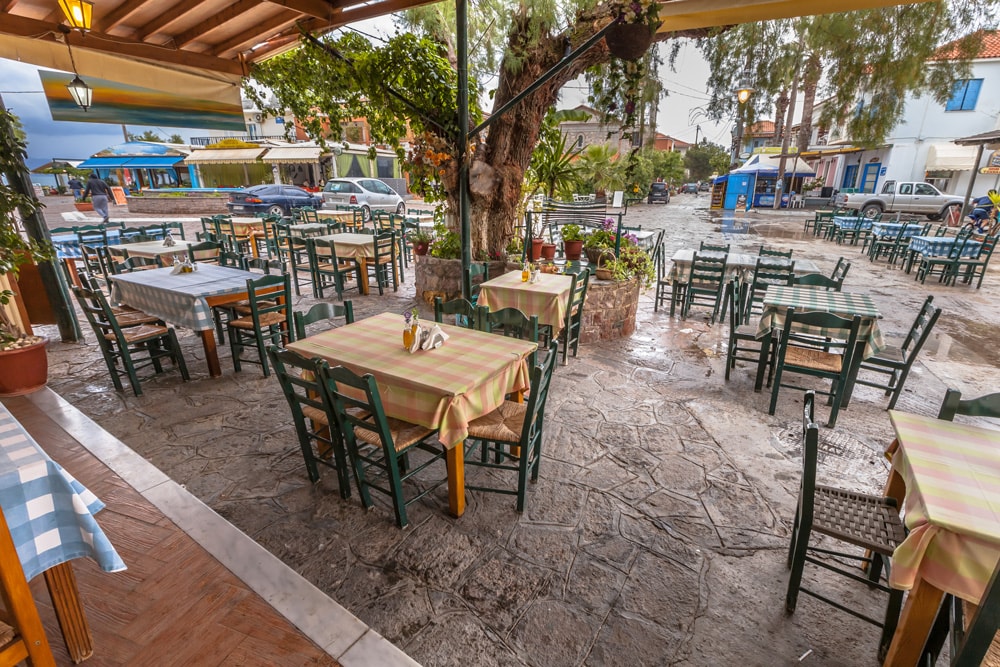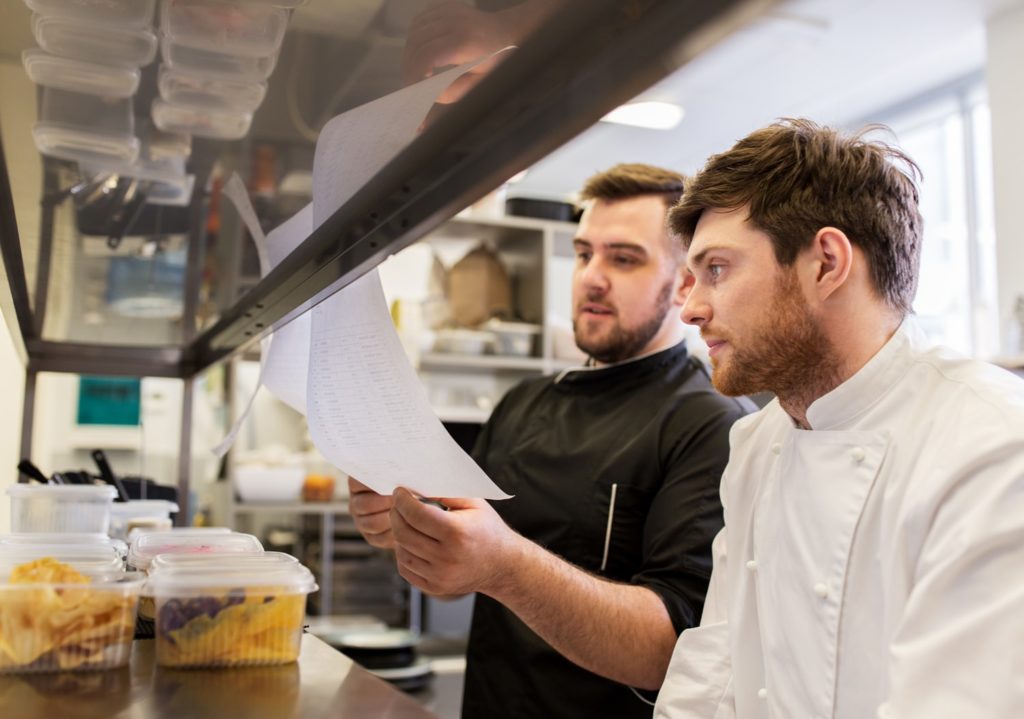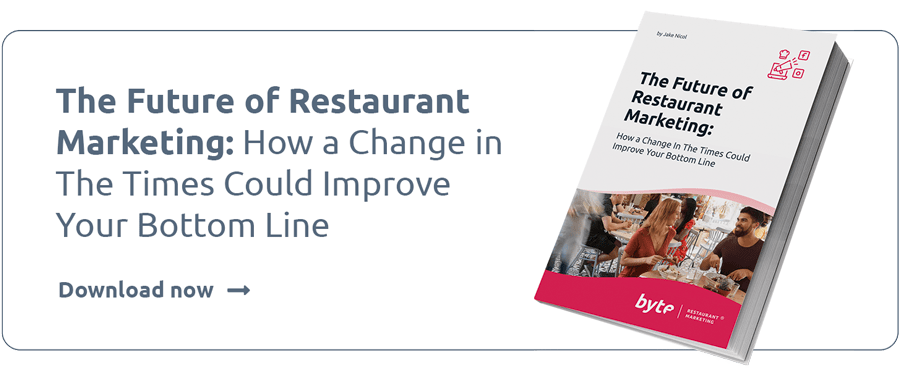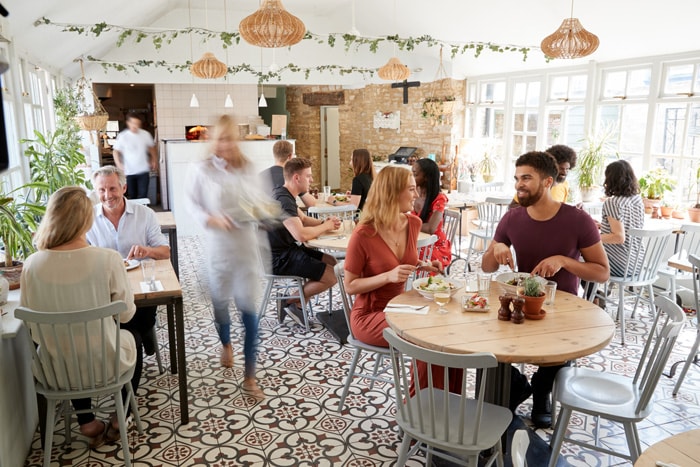It’s Time To Change The Way You Think About Restaurant Marketing
Between June 2018 and June 2019, more than 1,400 UK restaurants went bust. After over ten years of seemingly unstoppable growth, it appears the restaurant bubble has finally begun to burst.
But what does this mean for the future of the industry? And what can independent restaurateurs do about it?
As counterintuitive as it seems, this moment of acute industry panic is actually the perfect opportunity for smaller businesses to take back control of their own destinies.
But before we can explain how, we need to understand exactly why the bubble burst now…

Growing competition
50 million adults eat out in Great Britain each year, amounting to 2.4 billion individual restaurant visits – clearly, there is still demand for great food and ambience.
The problem is, that demand is being spread thinner and thinner.
The post-financial-crisis boom in restaurants has led to an oversaturated middle-market. And aside from the nearly 46,000 restaurants across the country, there are also rapidly growing options which expand how people think about the food industry and allow consumers to eat entirely on their own terms.
They can order gourmet food to be delivered directly to their doors; they can subscribe to make-it-yourself cooking services; they can visit pop-up restaurants which are inherently more novel and agile than traditional bricks and mortar businesses.
With constantly increasing competition, restaurants are under pressure to offer more and more value to entice consumers and differentiate themselves. And the problem is, this increase in competition comes at a uniquely uncertain and precarious time for restaurants economically…

Economic challenges
Operating expenses have always been a major challenge for restaurateurs, with tight margins and inherently volatile revenue making growth a perpetual struggle. But recent years have seen this struggle seriously ramp up.
The depreciation of the pound caused by Brexit has brought about considerable inflation in the cost of imported goods. Add to that the fact that 25% of chefs and up to 75% of waiters in the UK come from other EU countries, and you start to see quite how precarious many restaurants’ economic situation is.
Worse still, consumers too are feeling the economic burn. As general economic growth slumps and uncertainty abounds, consumers are less and less willing to incur unnecessary expenditure.
And while this doesn’t mean they’ve stopped eating out altogether, it does mean that in order to part with their money consumers expect more and more from their restaurant experiences…

Consumer expectations
Consumers today want meaningful experiences: they expect the businesses they support to be clearly aligned with their values and to keep up with their changing lifestyles.
Increasingly, being able to integrate technology, have a solid internet presence and demonstrate real ethical engagement are essential to consumers. They want healthier, more sustainable food; personalised, digitally agile customer engagement; and easier, more convenient service access.
Some restauranteurs may scoff at this. But the fact is, customer experience is directly dependent on customer expectation: no matter how good you think your service is, if a customer expects something different, or better, it will be almost impossible to give them the kind of showstopping experience which turns them into a repeat customer and brand advocate.
Small and independent restaurants are at a particular disadvantage here: while big chains can afford to invest heavily in meeting every consumer demand, smaller restaurants cannot hope to compete on this level.
For example: sustainability is a major concern for consumers: in one survey,
83% said they expect restaurants to be proactively persuing more sustainable approaches. However, 50% of businesses with fewer than 10 sites say they cannot afford to allocate resources to sustainability efforts; just 8% of businesses with 200 or more sites had the same problem.
***
To recap: we have staggeringly stiff competition which is only continuing to grow; we have economic precarity which increases costs, puts workers at risk and disincentivizes consumer spending; and we have wildly inflated consumer expectations, demanding technological expansion and ethical engagement at a level never previously seen.

So how, you might be asking, is this even possibly cause for optimism?
Because today is also the best time for a restaurant to reinvent itself.
Difficult times bring out the best in entrepreneurial people. And as restauranteurs feel their backs pressed ever harder against the wall, the opportunity arises for resourcefulness and passion to rise to the occasion.
There are so many solutions available to restaurants – with regards to technology, data and ethical engagement – that simply chasing trends is no longer a viable or intelligent approach.
It’s time, instead, to change the game you play.
Instead of chasing after the chains, smaller restaurants are in prime position to be smarter with their money and more resourceful in their strategies. But How?
By ceasing to think about your bottom line – your competition, budget and customer expectations – as a business problem, and starting to see it as a marketing one.

The future of restaurant marketing
Today, perception is everything.
Consumers are empowered like never before to research your restaurant and compare it to others, and this has effectively collapsed any boundaries between public perception and real value.
Did you know? 68% form an opinion after reading between one and six online reviews.
Every aspect of your operation – from how you treat your staff to how your website looks – affects how your restaurant is perceived, how customers experience it and how much revenue you are able to generate.
To think of these things as separate, siloed considerations is quite simply short-sighted.
The future of restaurant marketing – particular for smaller restaurants, which are able to be more agile and entrepreneurial by virtue of their lack of corporate protocols and bureaucracy – lies in looking at things as an integrated whole: every facet of your operation should focus on building and developing your brand, managing your customers’ expectations and delivering the kinds of experiences they crave.
And fortunately, while big chains will always have greater access to cutting edge technology and more to invest on insincere Corporate Social Responsibility projects, marketing today is a more level playing field than it has ever been before.
According to one recent poll, 73% of people would prefer to patronise a small business rather than a large corporation, and 36% of people are willing to spend more on the products or services of local small businesses.
That means that smaller, independent restaurants actually have an inherent advantage over their more powerful competitors – they just have to learn to leverage it by marketing themselves more effectively.
The restaurants that survive and thrive during this challenging period will be those that are intelligent and strategic about how they build brand differentiation; that understand and carefully utilise the changing digital landscape; and that focus on doing everything they can to delight their specific customer base.
So what are you going to do to make sure that’s exactly what your restaurant does?
________________
This blog is excerpted from our recent E-book publication, The Future of Restaurant Marketing. Please click here to download the full book for free.